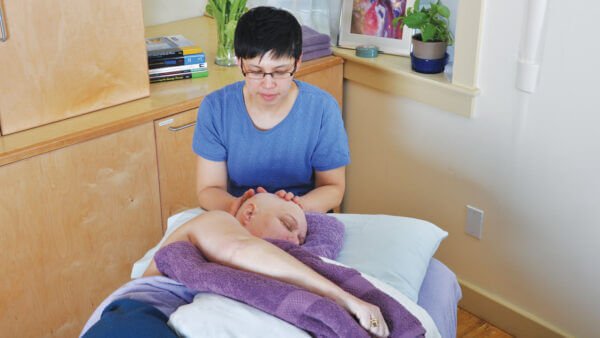Oncology Massage 101
An Introduction to Oncology Massage
Oncology massage is not a technique. It is, instead, a comprehensive approach that involves thorough assessment and adjustments made by the massage therapist to standard massage modalities such as Swedish or relaxation massage, myofascial release, or hot stone therapy. These modifications are made in response to the side effects of treatment or complications from the cancer.
There is always some form of touch therapy that can be safely provided. If a person is in treatment, the session might include a softer touch intended to help reconnect with the body in a kind, healing way. Later on the session might involve a technique that focuses on an issue such as reduced range of motion due to surgery or radiation. The spectrum of oncology massages and benefits is broad.

Each oncology massage session is personalized to meet a client’s individual goals while adjusting to their unique and changing needs. Practitioners trained in this discipline understand the process of cancer, the short- and long-term side effects of treatments, and how those treatments can create physical and emotional complications.
The changes that might be made to a massage can fall under any number of categories. Typically they will be related to the length of the session, pressure and direction of strokes, positioning, lymphedema risk, and areas of specific concern, such as catheters, incisions, or painful sites.
Oncology massage can be a wonderful addition to the care plan whether a person is in treatment, recovering, or using massage to maintain health years afterwards.
-
Oncology Massage can change the way it feels to live with a serious illness. By providing clinically reasoned and thoughtfully adapted massage, therapists nourish body, mind, and spirit to:
- Improve quality of life
- Reduce anxiety
- Help with the management of pain
- Improve quality of sleep
- Reduce fatigue
- Reduce unpleasant sensation from chemotherapy-induced peripheral neuropathy (CIPN)
- Increase function in areas affected by scar tissue resulting from surgery and radiation
- Reduce post-surgical swelling and support rehabilitation and recovery
- Support the lymph system and assist with lymphedema management
- Improve body awareness and image